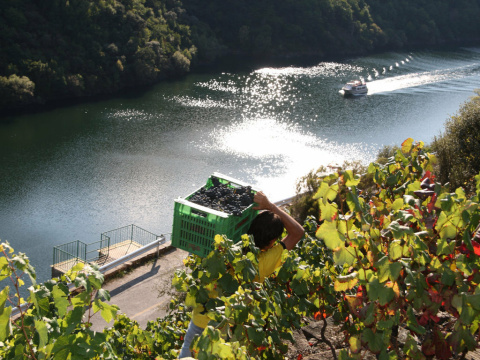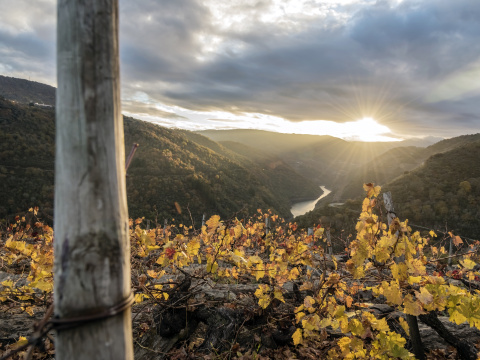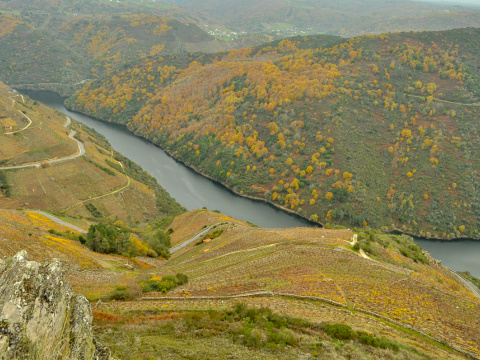Viticulture
It is said that cultivation of grapevines in Ribeira Sacra was initiated by the Romans, then recovered later during the Middle Ages by monks residing in the local monasteries. There are also stories claiming that the wine produced here was so esteemed that it was even demanded by the Roman emperors. In any event, this legacy of viticulture continues today, and production of wine is an important part of the local economy.
The wines produced in Ribeira Sacra were granted a Protected Designation of Origin (PDO) in 1996, and the region is known today worldwide not just for the quality of its products, but because of the special difficulties presented by growing grapes in the local landscapes.
Most of the vineyards in Ribeira Sacra are located along the banks of the Miño, Sil, Cabe, and Bibei rivers, on land that can have slopes as steep as 100%. These unique challenges, combined with almost no use of mechanisation in the cultivation and harvesting practices, is referred to as a form of “heroic viticulture”, which is a concept that can be applied to only 5% of the areas used as vineyards worldwide.
There are many ways for visitors to get a closer look at this particular form of cultivation and learn about its characteristics. For example, there are tours of local wineries (most of them run by families), viewpoints overlooking the vineyards themselves, and the Ribeira Sacra Wine Route, which is focused on visits to businesses and entities that provide unique opportunities to discover and enjoy wines from the Ribeira Sacra PDO.


